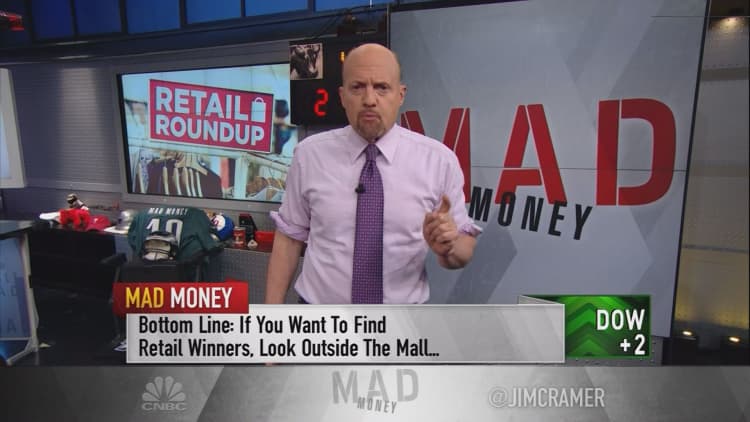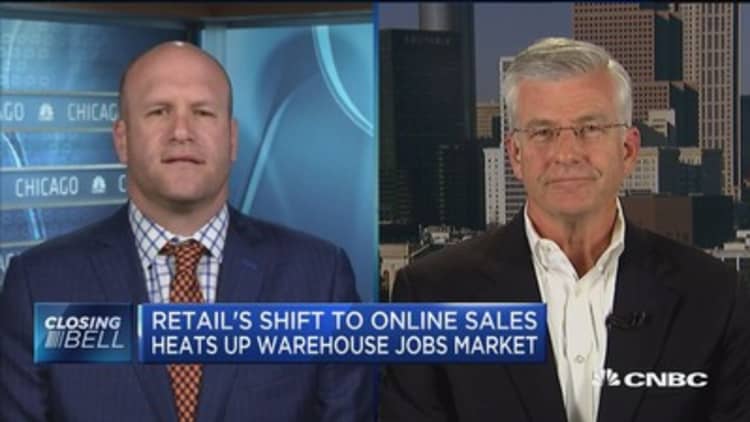When J.C. Penney decided to open appliance showrooms in its department stores, it wasn't just a play to grab market share from Sears.
It was also a way to limit its exposure to apparel, which accounts for roughly half the chain's sales. That dependence has put Penney's in a precarious position, as consumers put a smaller piece of their budgets toward T-shirts and jeans.
The Plano, Texas-based chain isn't alone. Companies like Urban Outfitters and Burlington are turning to categories like home and beauty so they're less bound to fickle weather or fashion trends.
While roughly 5 percent of U.S. consumer spending went toward apparel in 2000, that number has steadily declined to hit 3.3 percent in 2015, according to a recent report from Cowen & Co. citing the Bureau of Labor Statistics.

"Shoppers are spending a little bit more, but [apparel's] not as important to them," Tiffany Hogan, Kantar Retail's senior analyst for U.S. apparel, told CNBC.
A laundry list of factors has contributed the category's decline. From an economic standpoint, an abundance of bricks-and-mortar chains and low barriers to entry for online players has left the market saturated with choice. Those variables have thrown supply and demand out of whack, leaving midtier retailers with little choice but to compete on price.
Generational changes also play a role. The flight toward urban living and memories of the financial crisis have inspired many millennials to live frugally and free of clutter.
Meanwhile, social changes are afoot. As the workplace continues to be more casual, it's no longer a requirement to own separate weekday and weekend wardrobes. And with the popularity of social media, shoppers no longer look to major brands to dictate trends. Instead, they search for unique merchandise that represents their personalities.
"It's just a lot of things coming together to make a really difficult category," Hogan said.
Penney's has been one of the most direct about its plan to chase beauty and home goods, where consumers have been more eager to spend. The chain said Monday that it would rebrand an additional 50 salons under its InStyle nameplate this year in a bid to reach younger customers. It will also cut the ribbon on more Sephora locations.
Meanwhile, Penney's is rolling out appliance showrooms to another 100 stores and will test in-home installation services.
"Appliances reinforce the ongoing strength of our growth initiative as we pivot our retail strategy towards nonapparel and growing categories," CEO Marvin Ellison told investors on the company's most recent earnings call.
Urban Outfitters' CEO Richard Hayne admitted the company's higher-price Anthropologie label has been missing the mark on apparel. While it works to reverse the sales decline in that category, the brand is leaning into home decor and beauty — two segments where revenue increased last quarter.
Even Burlington, which built its business on winter apparel, is reducing the number of sales it generates from that category. Part of that shift includes a plan to grow its home business from 12.5 percent last year to nearly 20 percent. Cold weather apparel has been a particularly tough category the past few years due to unseasonably warm temperatures.
While diversifying their businesses is a good strategy to grab incremental dollars, there is risk, Hogan said. Namely, the fact that multiple chains are chasing the same categories could eventually lead to a similar saturation that's occurring in apparel.
The best way for retailers to go about this transition is for each to find its niche category to build its brand on, Hogan said. They can then use their rounded-out assortment to get shoppers adding incremental items to their baskets.
"There's always a balancing act to be played," she said.
Watch: Online retail fuels warehouse jobs market



